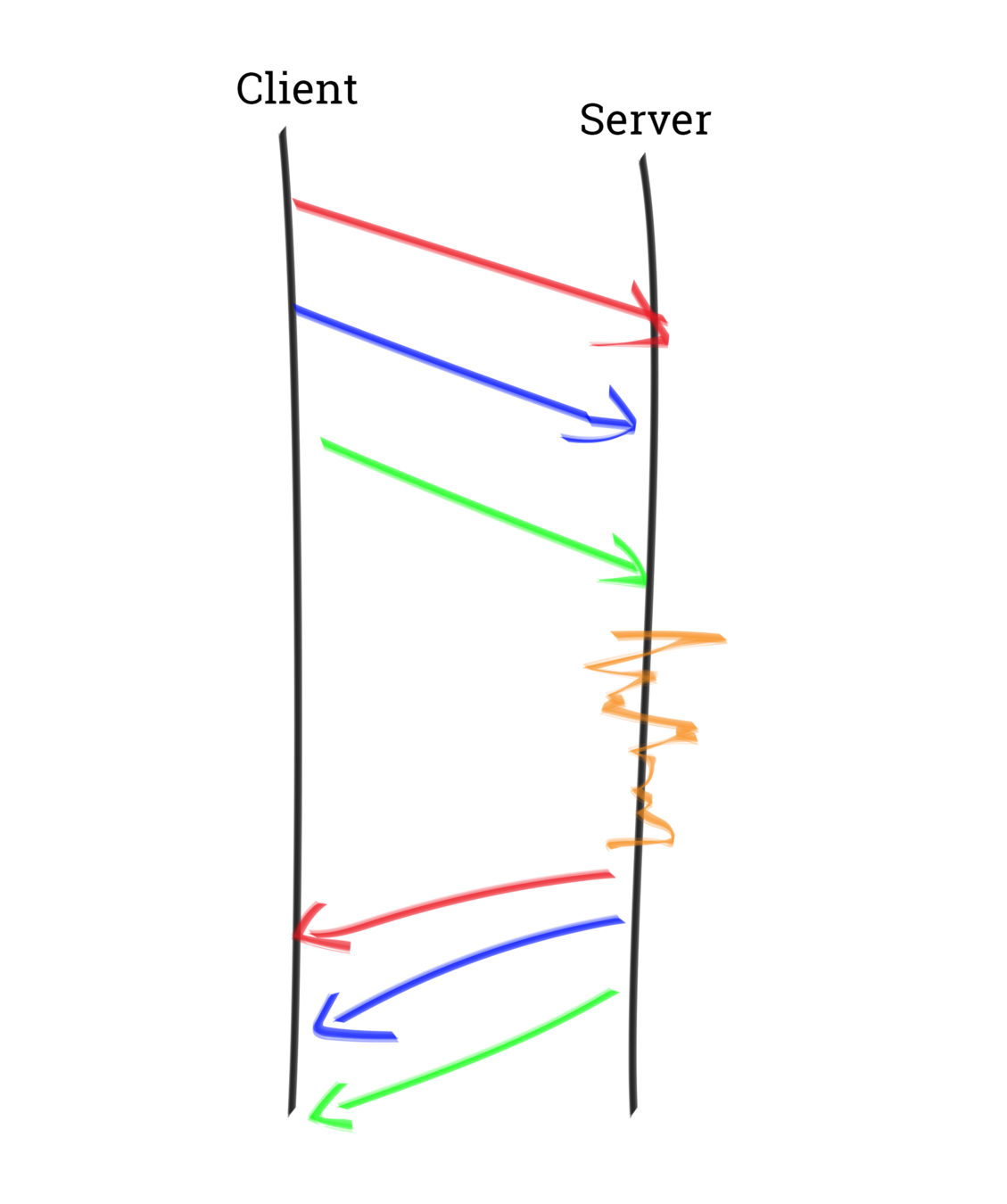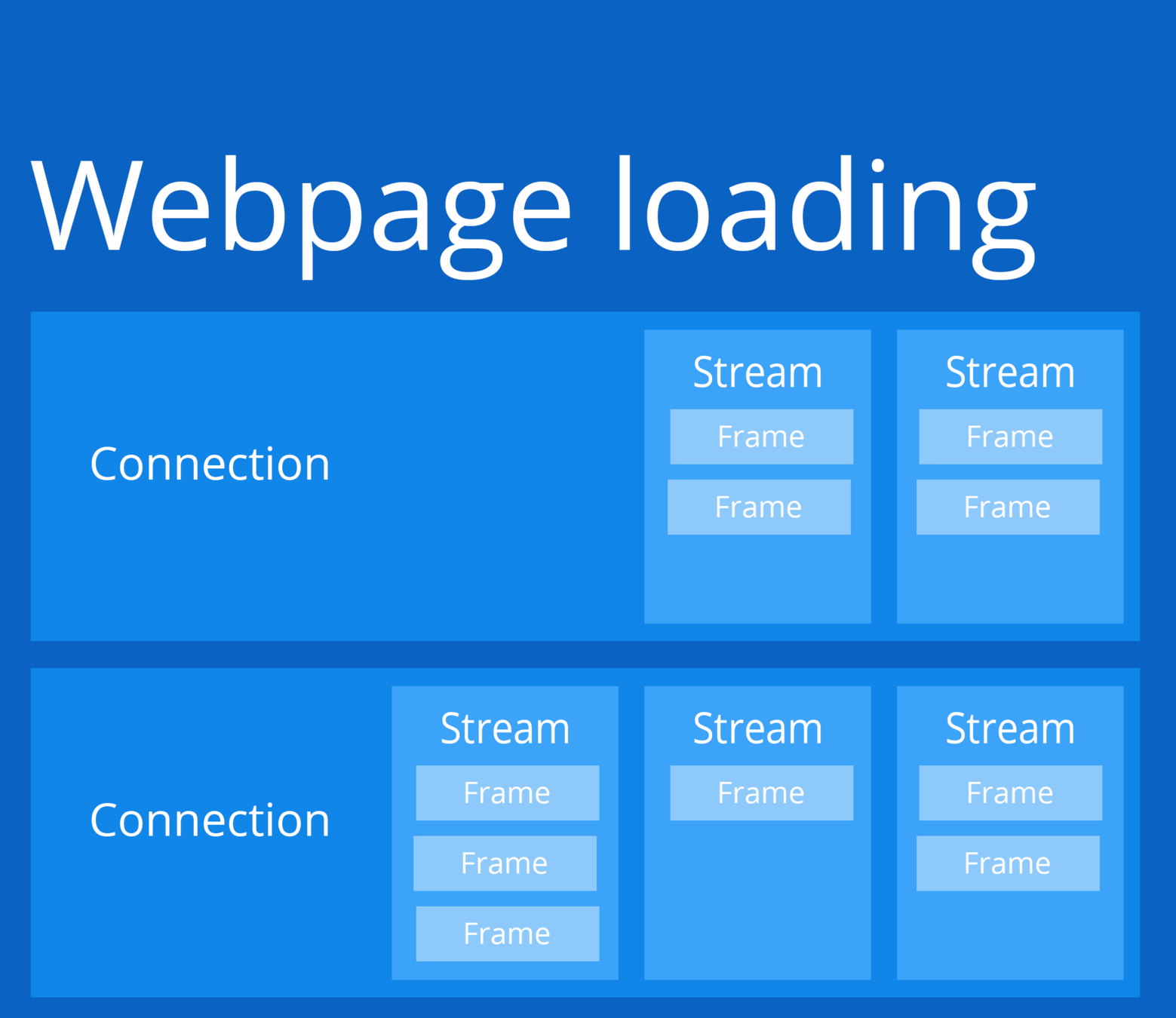HTTP/2
What
was wrong
with HTTP 1?

HTTP 1 💪
Plain text
Flexible
Stateless
HTTP/2 Features
Binary
Multiplexed
Header Compression
Stream Priority
HPACK
Server Push
HTTP/2 is binary
$ telnet google.com 80
Trying 216.58.206.206...
Connected to google.com.
Escape character is '^]'.
GET
HTTP/1.0 302 Found
Cache-Control: private
Content-Type: text/html; charset=UTF-8
Referrer-Policy: no-referrer
Location: http://www.google.gr/?gfe_rd=cr&ei=paI6WcyoFpDIXru7o4AH
Content-Length: 256
Date: Fri, 09 Jun 2017 13:29:09 GMT
<HTML><HEAD><meta http-equiv="content-type" content="text/html;charset=utf-8">
<TITLE>302 Moved</TITLE></HEAD><BODY>
<H1>302 Moved</H1>
The document has moved
<A HREF="http://www.google.gr/?gfe_rd=cr&ei=paI6WcyoFpDIXru7o4AH">here</A>.
</BODY></HTML>
Connection closed by foreign host.This is HTTP/1.1, which is text based
Multiplexed

Head-of-line
blocking

Frames & Streams
* HTTP/2 req/res pairs are given unique stream IDs
* Messages passing through streams are called frames
* Frames have common headers across a stream
* There are various frame types: HEADERS, DATA, RST_STREAM, SETTINGS, PRIORITY

Server Push
PUSH_PROMISE
FRAME TYPE
Stream Priority
Sum = 16
Stream B: 4/16 = 1/4
Stream C: 12/16 = 3/4
* Stream B Priority: 4
* Stream C Priority: 12
=> Stream C will get three times the resources allocated to Stream B
Header Compression
HPACK
Stateful
Static dictionary
Static Huffman encoding
Dynamic dictionary
Who uses it?
HTTP/2 is used by 14.6% of all the websites.
And as of April 13th, 2016, HTTP/2 traffic has now reached 68%. So in 6 months there has been a 17% increase in HTTP/2 traffic and adoption.